Research Article - (2018) Volume 2, Issue 1
Prachi Katti*
Oral Medicine and Radiology, Maratha Mandal Dental College and Research Institute, India
*Corresponding Author:
Prachi Katti
Oral Medicine and Radiology
Maratha Mandal Dental College and Research Institute, India
Tel: 08312471475
E-mail: dr.prachikatti@gmail.com
Received Date: March 21, 2018; Accepted Date: March 28, 2018; Published Date: March 30, 2018
Citation: Katti P. (2018) Evaluating Dental Practitioner’s Knowledge and Attitudes towards Cone Beam Computed Tomography in Belgaum – India: A Questionnaire Study. J Ora Med Vol.2 No.1:4
Objective: The aim of the study was to assess the knowledge and attitude regarding CBCT applications among dental practitioners of Belgaum city. Method: A self-designed questionnaire with 24 questions was administered to dental practitioners. Results: A total of 100 dentists participated in the study. The age range was 26 to 60 years, out of which 53% were males and 47% were females. About 63% were dentists with a postgraduate degree and 37% were BDS graduates. Karnataka State Dental Registration renewal for the year 2014 was done by 97% of the dentists. 38% of the dental practitioners learned about CBCT through attending CDE program whereas 28% through internet and 29% reading the journals and only 5% by other sources. Low radiation dose was identified as the most important advantage of CBCT by 85% of participants. About 57% would choose CBCT for implants, compared to other treatment modalities. Most of the practicing dentists 97% felts the availability of CBCT near their practice area is necessary and 92% wished to use CBCT technology in their future practice. Conclusion: The study indicated presence of fair level of knowledge regarding CBCT among practicing dentists of Belgaum city. They even have a positive attitude towards its use and applications in their future practice. Most of them felt a need for continuing dental education program regarding various applications and principle of working of CBCT.
Keywords
Dental practitioners; Knowledge; Attitude; CBCT
Introduction
Radiological investigation is essential to dentists for determining the presence and extent of dental disease in the patients. It also has a vital role in treatment planning, monitoring disease progression and in assessing treatment efficacy. Today new technologies like nuclear medicine, positron emission tomography, CT and MRI are becoming readily available in the field of dentistry. One of the most important developments in dental radiology today is Cone beam computed tomography (CBCT) [1].
The U.S. Food and Drug Administration approved the first CBCT unit (NewTom DVT 9000 Quantitative Radiology, Verona, Italy) for dental use in the United States in 2001. Since 2001, more than 20 commercial cone beam units have been introduced to the dental community worldwide [2].
CBCT has various dental applications, images of jaws and teeth can be visualized accurately with excellent resolution can be restructured three dimensionally and can be viewed from any angle [3,4]. The drawback includes beam hardening and scatter from dental materials and poor soft tissue contrast [3]. Most significant advantage being reduced patient radiation dose which is five times lower than normal CT [5,6].
The advent of CBCT has enormous applications in dental imaging. It is a type of imaging technology that is entirely new to dentists which provides opportunities for dental practitioners to request multiplanar imaging [5]. All dental practitioners have an obligation to use this technology in a responsible way, so that diagnostic value is maximised. As CBCT is a recent technology, this study is designed to assess the existing knowledge and attitude of general dental practitioners regarding CBCT of Belgaum city Karnataka.
Materials and Methods
A questionnaire consisting of 24 questions divided into 3 segments (1. Demographic data, 2. Knowledge related, 3. Attitude related questions) was designed by the author and was administered to dental practitioners (both BDS and MDS) of Belgaum city-Karnataka. A total of 100 dentists who fulfilled the inclusion criteria participated in the study. The inclusion criteria were to have a clinic in the Belgaum city corporation area, to give informed consent for participation and to have a Karnataka State Dental Council (KSDC) registration. After designing the study, the protocol was submitted to the Institutional Review Board of our institution and the study was undertaken after the IRB approval.
Results
In the present study 63% of practicing dentists were with a MDS degree and 37% were with a BDS degree. The mean age of the dentists who participated in the study was 37.5 ± 9.6 years (26- 60 years). Further in the study 53% of the participants were males and 47% were females. The study reveals that 85% had a dental practice for 5 to 10 years whereas 15% had more than 10 years of practice. The Karnataka State Dental Council registration renewal for the year 2014 was done by most 97% of them. 38% of the practising dentists have acquired knowledge of CBCT by attending CDE program whereas 29% have acquired through journals and articles. Low radiation dose was identified as the most significant advantage of CBCT by 85% of the dentists was as easier maintenance as least important advantage (1%).
The study revealed that 67% of the practicing dentists have referred their patients one or the other time for CBCT, while 33% have never advised for it. Use of CBCT for implant 55% was identified as the most suitable indication in routine dental practice followed by for trauma (15%), for orthodontic treatment (12%) for 3rd molar extraction (10%) and least for endodontic treatment (8%). 67% of the participants have referred their patients for CBCT at least once in their practice, while 33% have never. 97% felt that availability of CBCT unit near to their practice and 68% of the dentists feel that CBCT will replace OPG in near future. 97% dental practitioners are interested in getting educated regarding CBCT.
Discussion
Over the next decade, the cone-beam technology will become an important tool in dental and maxillofacial imaging. Clinical applications of CBCT are rapidly being applied to the dental practice [7]. However, although CBCT allows images to be displayed in a variety of formats, the interpretation of the volumetric data set, particularly when it comprises large areas, involves more than the generation of 3D representations or application of clinical protocols providing specific images.
The mean age range of the participants here was 37.5 ± 9.6 years (26-60 years) indicating that majority of practicing dentists were young in our city (Figure 1). This finding is highly pleasing and encouraging as our young professional colleagues are leading the oral health care delivery system in this part of India. The sudden increase in number of dental graduates as a result of increase in dental institutions in our country in last decade also could be the reason for sudden hike in dental professions who are also young [8]. Further the study revealed that 53% of the participants here were males and 47% were females (Figure 2). This finding indicates the growing female predominance when it comes to dentistry as a profession. There is a trend which shows a gradual increase in females opting for dentistry as a profession in our country [9,10]. The finding here in our study shows that females are not only graduating as dentists but also they are actively participating in health care delivery by practicing dentistry [10]. The study reveals that 85% of dentists had a dental practice for duration 5 to 10 years whereas 15% of dentists practicing duration 10 to 15 years (Figure 3) which again signifies that most of the practicing dentists are young and have set up their practice since last 5-10 years. 63% of dentists in our study were with a postgraduate degree and 37% were BDS graduates (Figure 4). This signifies the sudden rise in number of dentists with a postgraduate degree in our country and more so in state of Karnataka. We can attribute this to the presence of highest number of dental institutions which are offering MDS degree in our state and more so in this part of Karnataka [8]. 97% of the participants had renewed their KSDC registration for the year 2014 indicating good awareness about the governing regulation for practicing dentistry.
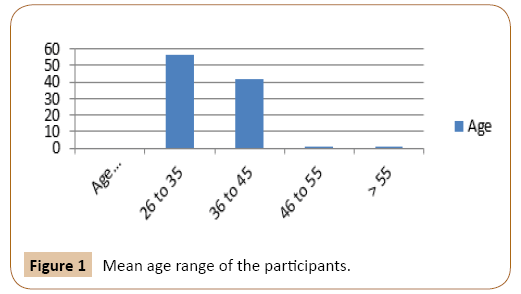
Figure 1: Mean age range of the participants.
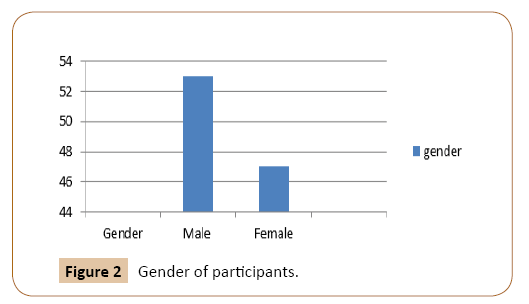
Figure 2: Gender of participants.
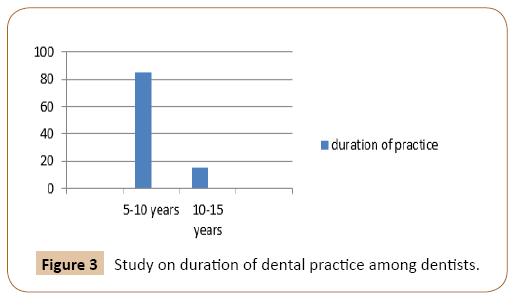
Figure 3: Study on duration of dental practice among dentists.
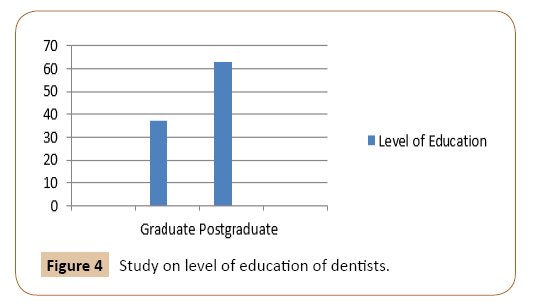
Figure 4: Study on level of education of dentists.
The study also reveals that 38% of the practising dentists have acquired the knowledge of CBCT by attending a CDE or a workshop. The active participation of practicing dentists in CDE can be attributed to the compulsory credit point acquisition as criteria for renewing their yearly registration or their own selfmotivation to learn newer technologies. 29% have acquired the knowledge regarding CBCT by reading journals and articles (Figure 5). This can be attributed to the fact that most of the practicing dentists especially specialists (with a MDS degree) are also attached to the two dental colleges in the city wherein they have an easy update to recent Journals, books and also attend various Post Graduate academic activities. Low radiation dose was identified correctly as the most significant advantage of CBCT by 85% of the dentists (Figure 6). In one of the earlier study conducted in Turkey, 61% of dental students identified low radiation dose as the major advantage of using CBCT which is comparable to our results [11]. Other advantages identified were data reconstruction on personal computer (5%), less expensive (3%), shorter scanning time… etc.
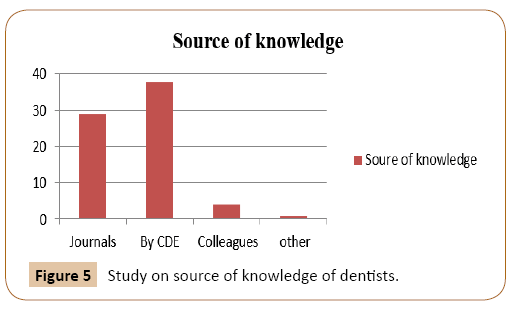
Figure 5: Study on source of knowledge of dentists.
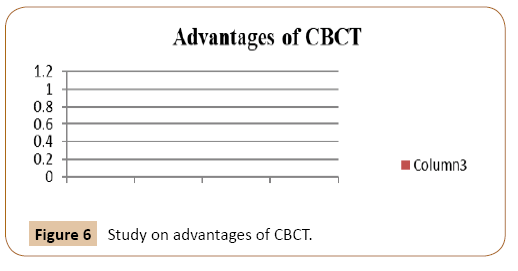
Figure 6: Study on advantages of CBCT.
79% of the dentist who participated in the study knew that CBCT has low radiation dose exposure as compared to Medical CT (Figure 7) again emphasising the fact that the current set of practitioners are well aware about the latest innovations in the field of dentistry.
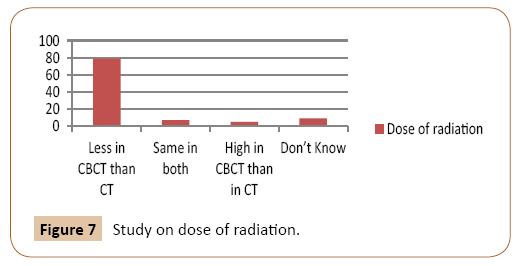
Figure 7: Study on dose of radiation.
CBCT uses much lower dose as compared to Convential CT but significantly higher than conventional dental radiograph [5,6,11]. Use of CBCT for implant (55%) was identified as the most suitable indication in routine dental practice followed by for trauma (15%), for orthodontic treatment (12%) for 3rd molar extraction (10%) and least for endodontic treatment (8%) (Figure 8) [12]. Hence we can suggest that use of CBCT is simple and can easily be integrated into routine practice, particularly for trauma and implantology [13,14].
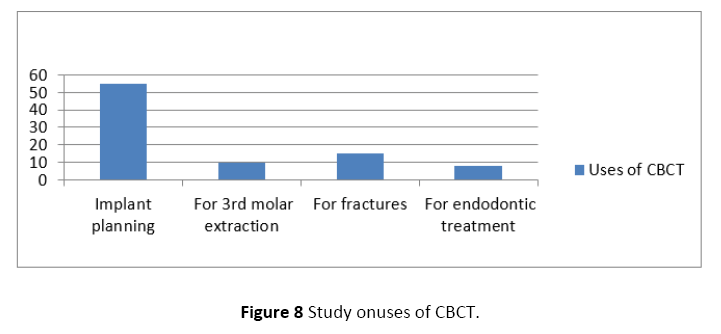
Figure 8: Study onuses of CBCT.
67% of the participants have referred their patients for CBCT at least once in their practice, while 33% have never taken the opportunity of doing so. The inhibition might be due to the fact that CBCT centre is not situated in Belgaum city, however the dentists have to refer the patients 100-200 km away from Belgaum city to the places like Dharwad, Kolhapur and Goa which further causes inconvenience to the patient. 69% of participants in the study agreed that CBCT would be used in the near future in all areas of dentistry. Our findings are similar to one of the latest study conducted in India, wherein 41% dental practitioners agreed that CBCT will be used in all area of dentistry in near future [15]. Most of the practicing dentists (97%) felt that availability of CBCT unit near to their practice will encourage them to use it regularly. 68% of the dentists feel that CBCT will replace OPG in near future. Majority of them (97%) are even interested in getting educated regarding CBCT (Figure 9). This shows a positive attitude of practitioners in Belgaum city who are keen to getting updated regarding the recent technologies.
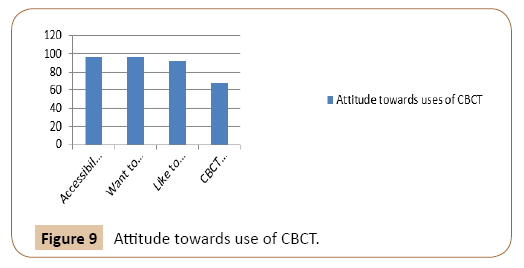
Figure 9: Attitude towards use of CBCT.
Conclusion
The development and rapid commercialization of CBCT technology dedicated to imaging the maxillofacial region will undoubtedly increase dental practitioner access to 3D radiographic assessments in clinical dental practice [7]. As a health care professional, we are obligated to place patient safety above our own self-interests by ensuring the safe and efficacious use of ionizing radiation in dental practice. The greatest practical advantage of CBCT in maxillofacial imaging is the ability it provides to interact with the data and generate images replicating those commonly used in clinical practice [7,12]. Our study clearly indicated that practicing dentists of Belgaum city have fair knowledge regarding various applications of CBCT and it also showed that they have a positive attitude towards its regular use in future for various clinical applications. The dentists of our city would be using the technology much more if the CBCT unit functions within the city limits. This will not only encourage them to use the recent advancement in dental imaging but will also help the patient community in and around Belgaum city.
Acknowledgments
Your valuable participation in the study is thoroughly appreciated- Thank you.